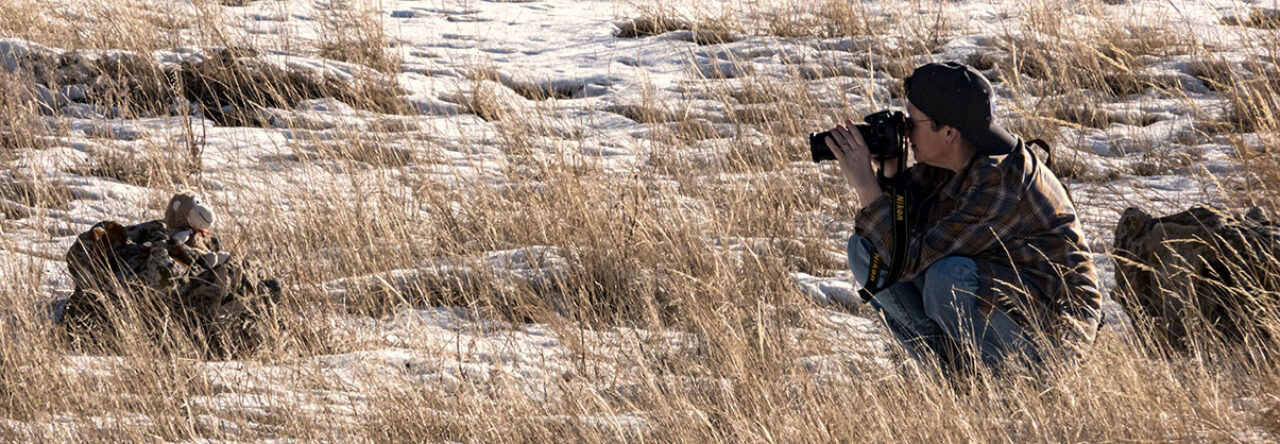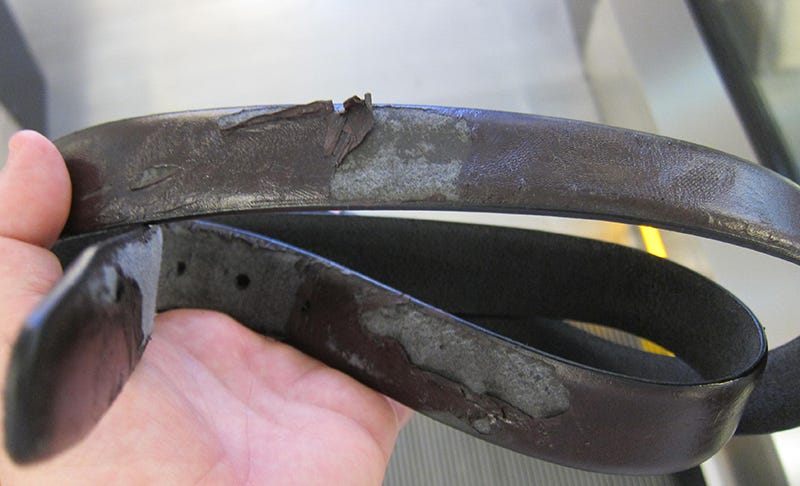Note: This story originally appeared on my Substack page. I have decided to re-share it here as I cannot keep up with Substack, this blog, and two jobs at the same time anymore. For those of you who haven’t read the story before – or heard me retell it to you in person – I hope you enjoy it.
It was another bright and sunny day in Dar es Salaam. Hendrik, Paul, and I didn’t want to sit around looking through wedding photographs, even if they were of Hendrik and Salma’s wedding. The truth is, we were left out of most of the “looking” and were just hanging around as Salma and the wedding photographer spoke in Swahili while pointing at the computer screen.
They were picking out which photographs to keep. It’s possible they were making fun of people in the photographs. It didn’t really matter. We just wanted out of there.
“Hey, didn’t you say you needed a new belt?” Hendrik asked Paul.
“You should be able to find one on the street,” Salma said, barely looking up from her photographs on the computer screen.
The three of us jumped at the opportunity to do anything else and headed back outside and onto the streets of Dar in search of a belt. The search for a belt was the last of several trips away from the photographer’s office that day. We went to a frame shop to order frames, which would be cut and delivered later the same day to Salma’s parent’s house. We ate lunch at The Alcove, a local Indian restaurant and one in which I could probably live.
We had Hendrik’s shoes shined, bought CDs by African pop musicians and gifts for Salma’s family. Even with these tasks completed, Salma and the wedding photographer were not finished sorting through the photographs.
The more time you spend in Dar, the more you learn that you can find almost anything along the streets of the city. It appears relatively easy to set up shop and begin selling your wares. And there were many shops.
As you drive along any street, you will see shoes, shirts, trinkets, fruit, homemade ugali or other street food, and a host of other items. We were advised to avoid the street food in Dar, particularly the ugali. It wasn’t safe, we were told. It should be obvious and natural to hesitate purchasing from someone with a makeshift fire on the edge of a dirt road and a silver pot, charred black with time, full of half-cooked ugali. It’s clear the person has to make a living, but it’s not the most sanitary situation and many foreigners get sick from eating from such conditions.
Mama Leylah, Salma’s mother, created the perfect ugali for us to eat after learning we wanted to try some. It was made on an outside stove in a silver pot, charred black with time.
In Dar, there are always lines of traffic at the red lights. If you are there for too long, someone will come up to your car window and offer to sell you things. There are fake insurance stickers for your car, fruit – mostly oranges – newspapers and magazine, books, nuts, and other unusual offerings.
One day, I saw a man selling TV antennas. On another, shoes. Each pair of shoes were tied together and then hung by their laces on a homemade rack the young man carried around.
On another occasion, a man was selling a Thighmaster by Suzanne Somers. Its box was a bit battered, but he was willing to sell it to anyone who wanted it.
As we wandered down the street, we passed the block where I had purchased my mzungu T-shirts. A mzungu is Swahili for a person of foreign descent, or a white person. I purchased two because it would be impossible in the future to go back and get another one.
The streets outside the photographer’s office were lined with people selling a variety of shirts, from those with mzungu emblazoned across the chest to soccer kits. As we walked down the street, Hendrik stopped abruptly, and looked on the other side. There were four men standing around talking. One was smoking a cigarette. A dozen or so T-shirts hung on hangers, out for display for what they had on offer. On the ground, stretched across three differently colored towels were belts. Some were rolled up. Some were stretched out.
“Shall we go have a look?” Hendrik said. Paul nodded.
We walked in between two parked cars and made our way across the busy street. The belts available ranged in color from light brown to black. Paul bent over and picked up several to examine the color and workmanship.
After looking at several, it dawned on Paul that each one was handmade. He tried on a few belts and, like any true salesman, one young man made sure the belt went through each belt loop on Paul’s pants. The young man would step back, stroke his chin and furrow his brow, at just about the same time Paul would decide it was not the right belt.
When Paul finally found a dark brown belt he liked, it just barely fit on the last loop hole. A belt should always be worn in the middle loop hole. Disappointed, Paul took the belt off. The young man sensed Paul was about to walk off and continue his search.
“No, no, no,” the young man said. “Wait.”
He took the belt from Paul’s hand and walked back toward the large, wooden wall displaying t-shirts. On the ground was a dark blue bag, round at the edges. The young man squatted down, the belt draped across his legs. He unzipped the black zipper and pulled out some tools.
He took the belt and measured the distance between the holes, then carefully punched two more holes into the belt using an awl and a small hammer. Then, he took a leather hole punch tool and made two perfectly round holes where the awl had just pierced the leather. He smoothed the edges and brought the belt back to Paul. He helped Paul place the belt around his pants. I knew at that point we were going home with that belt no matter what. After all, who could turn down such an eager-to-please craftsman?
Paul affixed the prong through the middle hole on the strap. It was a perfect fit.
Now, a price had to be determined. A handmade belt of this quality would easily cost $60-75 in the United States. A closer inspection for minor flaws or blemishes revealed a craftsman who took pride in his work and made every effort to make each belt a source of quality workmanship. The starting price was $25. I would have paid it. I’m not good at haggling, but, at least in Tanzania, if you don’t haggle, you are considered a fool.
So, Paul and Hendrik bantered back and forth. Hendrik was much better at haggling. It must run in his family. His brother, Meinderd, had wanted a chess board from the Mwenge Woodcarver’s Market. Its creator wanted $100. Meinderd haggled the price down to $28 and walked away with a chess board, hand-carved chess pieces, and hand-carved checkers. The gentleman at the market said with a smile he didn’t like Meinderd because he haggled so well.
Hendrik took over. The two men spoke a bit more and settled on $5. Paul paid the young man, who had rolled the belt up and put it in a bag. The pair strutted back across the street and all the way back to the photographer’s office. They were proud of the result and discussed how they couldn’t believe Paul now had a high quality belt for next to nothing.
As we reentered the photographer’s shop, the photographer was still sitting at his desk looking at the computer screen. Salma was still standing next to him, pointing at photographs, speaking Swahili and, presumably, picking out the best pictures of her wedding. When they realized we had returned, they looked away from the screen and focused their attention toward us.
“Well, did you find one?” Salma asked.
“We did, Hendrik said. “And it’s a nice one.”
Paul handed the bag over to Salma. She and the photographer inspected it.
“Nice,” she said, handing it back. “How much did you pay for it?”
Standing tall once again, Hendrik replied, “We got a really good deal. It was only $5.”
In unison, Salma and the photographer replied, “You got ripped off.”
Paul wore the belt every day from August 2005 to June 2018. He replaced it with a belt he found in Hong Kong, as it was severely falling apart. Paul did not want to get rid of it as the belt was one of the best he ever had. A ripoff, indeed. /s


Leave a Reply